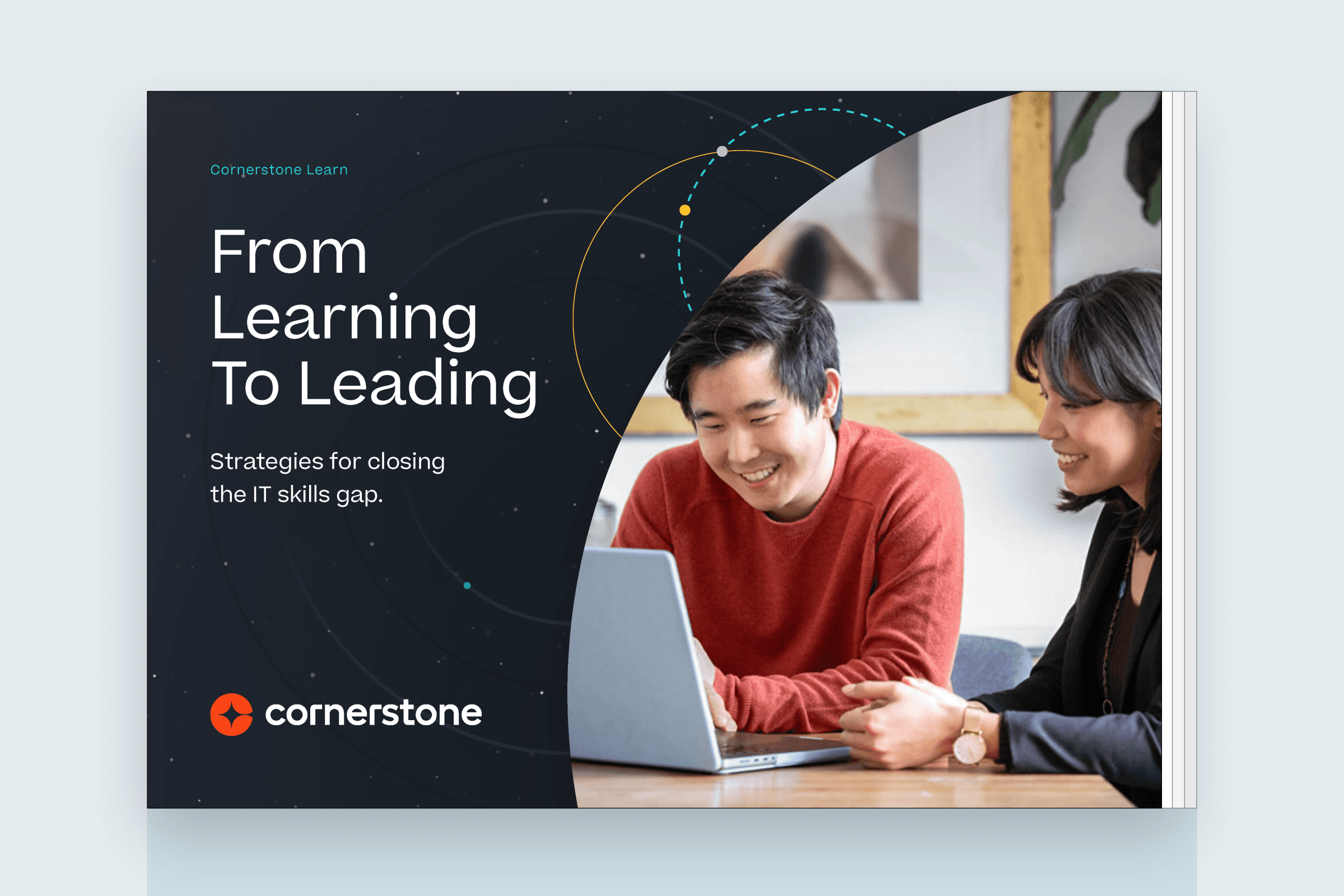I have lost count of the number of times people have asked me to help them understand the HR technology they have or expressed concern that they really don’t know how to obtain or use data to support their HR decision making. Getting to know more about how these technologies work brings so many benefits; increased productivity, insights that can transform talent management strategies, better decision making etc. In this series of three blogs, I’ll explore why it does matter that we overcome the fear and better understand how data-driven HR technology is changing the landscape.
Can you remember the first time you used a computer or a smart device? Perhaps you can and you felt there was so much to learn, you wondered if you would ever get used to using one. Perhaps (like me) you thought you might not need to (yes, I am old), or perhaps you have grown up with these devices as part of everyday life and don’t recall. Wherever you would place yourself on that spectrum, for most of us these devices, technologies and systems are now just a part of our everyday personal lives. Things we use confidently, daily without having to stop and think, read a manual or ask for help. We reach for them, talk to them and rely on them so frequently, we often struggle when we must make do without them and, mostly, we like it when new functionality becomes available, that allows us to do more, more easily.
Today, a total of 5.16 billion people around the world use the internet – equivalent to 64.4 percent of the world’s total population. And then there are all the devices that use internet connectivity (IoT) and the fact that less than 2% of all information is now non-digital.
We have become used to the fact that our online activity creates a mind-blowing amount of data every second, in fact we often rely on this to discover new content or products when browsing. We know this data is being gathered and used by people and machines to personalise our experiences and influence our decisions in real time. We use this data often without thinking about it, when choosing what to watch next for example, and we manage it too, e.g., as part of actions we take to protect our data. We expect these technologies (or our service providers) to serve us this data at the point of need. Renewing your contract? Based on your monthly usage we recommend… and so on. Most of the time, we take this in our stride.
In our working lives in HR and People functions, we too often rely on a range of technologies and devices, and we are also charged with helping others use them too – Human Resource Information Systems (HRIS), recruitment systems, learning management/experience platforms, mentor matching systems, talent management systems and marketplaces, payroll systems etc. Many of these are now sophisticated systems that deploy AI and machine learning technologies and automate billions of daily tasks around the world. Just like our personal devices, these HR technologies also generate, collect and store an enormous amount of data. Data that can help us, for example with predictive HR analytics that can help us make decisions, inform our practice, underpin our strategy. What a world of opportunity to improve the human experience that we likely could not perceive when we first used a computer or smart phone. So, why is it that so many people professionals generally feel very differently about these technologies than they do those they use in their personal lives? One minute, we are swiping confidently between apps and settings on our own devices, the next we are struggling to understand or use a technology in our workplace (physical or virtual) or to get the data we need, to make sense of it, to use it meaningfully and so on.
Insights from sources such as the LPI (Learning Performance Institute) Learning and Performance Accelerator consistently confirmthat there are many practical reasons (e.g. outdated technology, governance and ownership) and commercial reasons (e.g. limited budget) for this. But many are personal, stemming from a lack of knowledge or skills or from a lack of confidence. Concern that we don’t really know how these systems work or what we can leverage them for, fear of getting it wrong and feeling embarrassed or wasting time, fear of what we might discover. Unlike with our personal devices, we may not be able to do much (except try to influence) the practical and commercial challenges but we can and must adopt a mindset that embraces the fear and educate ourselves about the people tools, technologies and data we have available to us and the opportunities they create. Be honest, have you really taken the time to learn enough about how they work, what technologies they use and what their potential is?
There are some great examples of what can be achieved in HR by leveraging technologies and data. Opportunities to automate time consuming, manual tasks – freeing up your people to undertake more valuable, meaningful work. Opportunities to speed up decision making or improve it, for example if you can use recruiting analytics to identify the points in a recruitment process that do not support inclusive hiring decisions. Not least, opportunities to avoid wasting time on projects that will not make a difference, for example, as my colleague and friend Amanda Nolan rightly observes, if the data tells you that a group of managers are struggling to manage effectively with too many direct reports, it is likely that (expensive) coaching course for managers will not make a difference. You need data to help tell you where problems exist and to understand those problems. You can then harness technologies to be part of the solution e.g. by using skills tech to understand people’s skills and highlight relevant internal opportunities to them, as part of your retention strategies. Take heart from the fact that around 50% of people would say they too are still in the process of developing a suite of tools and technologies that work for their organisation.
So, that’s the why but what about the how? Where to start if you are feeling the fear right now (or just lack confidence)? Here are my top tips to get you started:
Start small. You should certainly not be trying to become a people analytics expert or HR technology systems administrator – those are skills that you should value and have in your team. If you don’t have people with those skills on your team, figuring out how you will address that might be a good start.
Focus on the biggest issues around you and start exploring at a high level how the technologies and data you have could help you solve them. If your organisation is struggling to recruit to some key roles, what does the data tell you about the likely reasons for this? What functionality in your systems could help address some of the causes? Taking out some of the pre-screening tools might help! If your people are struggling to find resources that help them develop their skills, what can your learning tech do to improve the personalisation of recommendations? Sometimes the smallest piece of data, e.g. data on searches that do not find any results, are the most revealing.
Aim to understand how the tools you have should work (not how to code them, but what they can do). Be curious and make time each week to have purposeful conversations with people in your team and other teams, with your networks, vendors and peers. Talk about the tech they use in their roles, their organisations and the HR tech and data they find interesting or wish they had.
Take recommendations and try to listen to a podcast or read an article each week that expands your understanding. For example, if you don’t really know what skills tech is or should do, try this excellent summary from RedThread.
Avoid generic Google searches – a search for becoming a “data driven HR leader” will likely lead you to content on data visualisation and SQL and end you up right back at panic!
Expect and seek help from your technology vendors. Most times, organisations do not get the most from their systems because they don’t ask the people that supplied them to help them to do it. And, yes, we all have stories of how vendor x or y was unhelpful/unavailable/charged for advice etc but, in my experience, often we fail to ask them, for fear we will look like we don’t know what we are doing or because what they tell us might mean we need to do things differently. It is in their interest to help you succeed, so work with them wherever you can. A good partner should also help you understand how their system should work with the other technologies and data sources you have too (and definitely not just HR systems and sources!).
As Jacob Morgan recently put it, today every company is a technology company, so it is time to get to know the technologies and data you have and could have. Like many things in life, once you understand them more, the less scary they are. In the second blog in this series, I’ll delve more specifically into the detail of using tech and data in L&D. In the third, I’ll talk about how data driven HR technology can help transform your approach to talent management.
Learn about building talent with the skills you need.
Aritcle written by Helen Smyth.


